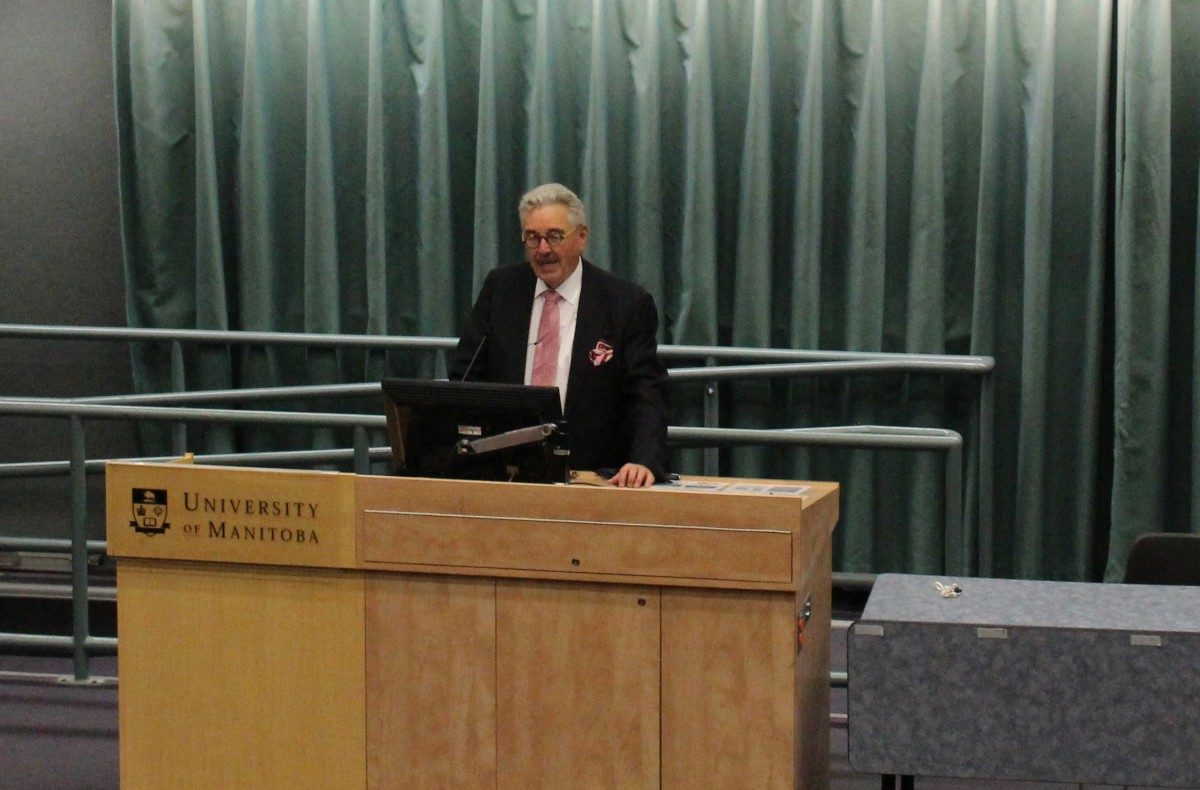
Fetal monitoring: the early years to now
When Frank Manning was nine years old, he had a friend named Allen.
In his hometown of Reston, Man. in the 1950s, Allen was called to as a “blue baby,” meaning he was born with a blue complexion from lack of oxygen. As he grew, it became clear he had some cognitive disabilities related to his difficult birth.
One day they were playing together and Allen turned to his friend and asked, “Am I retarded?” Frank said that he was. Next he wanted to know, “Can you fix me?”
He couldn’t. No one could.
Manning (MD/70) went on to a medical career, specializing in obstetrics and gynecology. To be clear, he doesn’t credit career choice to a playground conversation. But as he went on to break new ground in fetal monitoring, he says he often thought about Allen. What if babies could be spared the effects of a birth trauma? And what if we could tell when babies are struggling in utero, so physicians could offer better care?
For one last time, Manning offered his story of the progress of fetal monitoring in Canada for a rapt audience at a September 22-23, 2017 continuing professional development event at the Rady Faculty of Health Sciences, organized by CPD-Medicine event planning in collaboration with the Dept. of Obstetrics & Gynaecology. He called it his “swan-song,” his final presentation on the topic after a four-decade career working to help children and mothers to have healthier birth experiences.
As the first address of “Celebrating the Past: Embracing the Future – New HSC Women’s Hospital Redevelopment Project” Manning set an inspiring and optimistic tone for the two-day event.
When he began his career, equipment was unimaginably simple “We had the crudest ultrasound you could imagine,” he said. “It had just one line – now we use 265!” At that time, they could see a fetus and were beginning to understand more about life before birth. “But even when we could see something wasn’t quite right, we didn’t intervene because we didn’t know what to do.”
Technology improved and so did the science. Manning credits teamwork – a skilled group of physicians, obstetric nurses and other healthcare professionals – with the great strides that came next. “Some of the fetuses were particularly hard to see,” he said. “One of the nurses made a comment that it was those fetuses that died.”
Once that connection was made, “EUREKA!” said Manning. If there is no amniotic fluid, the fetus cannot be easily seen. And with no amniotic fluid, the fetus is in distress. A set of variables developed along with benchmarks.
Looking back, Manning was able to review data from 1979 all the way through to 1998, with 84,000 patients tested. “It was an incredible number!” he enthused. He compared deaths from asphyxia between the group that was tested and those who were not and discovered a crucial fact. Mortality in that second group was about double.
“We could say, if our goal was to reduce fetal death, we did,” said Manning. “It’s a pretty significant achievement.”






